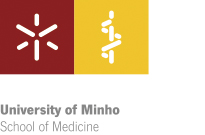This methodology is applied in a significant part of the curricular units of first part of the medical degree, namely those more focused on the learning of biological or fundamental biomedical processes. Scientific topics – e.g. Anatomy, Pathology, Physiology, Genetics, Molecular Biology - are tackled in an integrated perspective, typically anchored on specific clinical relevant problems. These can be part of the cell life cycle (e.g., proliferation and cell death), an organic and functional system of the human body (e.g., digestive system) or a type of pathologies (e.g., tumours). The integration is also reflected in the organization of the faculty and in the assessment/evaluation of the students' performance.
Classes are predominantly interactive and the teacher’s role is mainly to guide the students through the learning process rather than an instructor who transmits knowledge. Classical lectures are turned down to privilege "self-learning" classes, in which students built their knowledge/skills. Some seminars, essentially based on clinical cases, take place since the first curricular year.
The learning process is anchored around "learning objectives" that define the milestones to be achieved in each module. These are placed in the e-learning platform of ECS.
The learning process goes through five different "Phases”:
Phase 1- Presentation and discussion of learning objectives by the students (they assume different roles within the Group), in order to develop (in collaboration with the faculty) a conceptual map and identify the resources available to achieve the milestones and educational goals.
Phase 2- Self-learning tutorial. During this phase, the longest, the students, divided by groups and accompanied by the faculty, work on the available pedagogical resources in different environments (laboratory, web-resources, tutorial room, library). Learning of the relevant contents and cognitive skills training occurs mainly at this stage.
Phase 3- Monitoring and verification that the objectives were achieved. During this phase the groups of students and the faculty share and discuss the contents associated with the objectives, in an interactive environment. In this phase the faculty will identify the weaknesses of learning process in an individual, or in a group of, students and will program specific tutorials (to take place in phase 4) to overcome those weaknesses/difficulties.
Phase 4- Specific tutorials (practices and other complementary activities). It precedes the evaluation. These classes can take place in laboratory environment or in tutorial room and, as a rule, are aimed at small student groups. There are, in parallel, individual tutorials through electronic tools.
Phase 5- Evaluation of the module. Period dedicated to assess cognitive and skills acquisition and performance.
Knowledge and skills listed in the "learning objectives" of each curricular unit are formative and continuously assessed. With this system of assessment, the student accumulates the qualifications obtained in the different learning modules. Skills are assessed through an objective structured exam.
The summative evaluation methodology stems from a cumulative process that takes into account:
1. The classifications obtained in each module;
2. The classification obtained in the skills test;
3. The classification of the “integrated” written test (held at the end of each curricular area, that encompasses all contents of the area);
4. The classification of the student’s attitudes.

